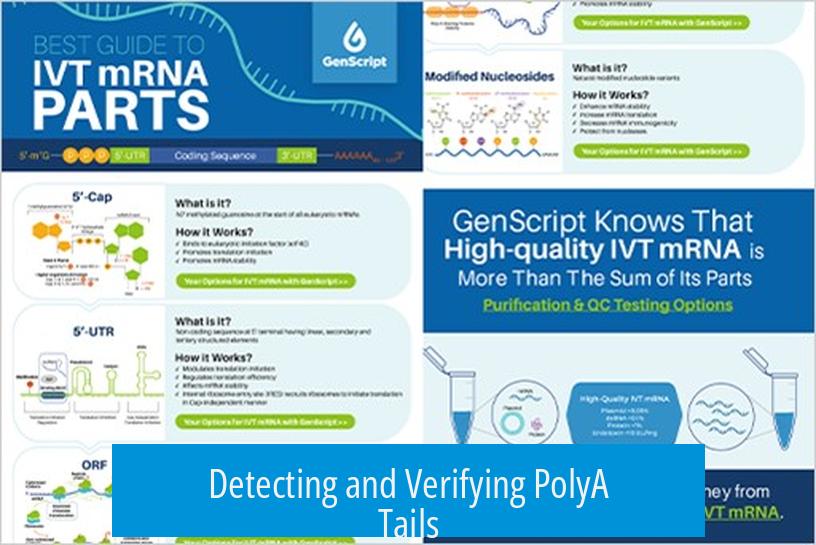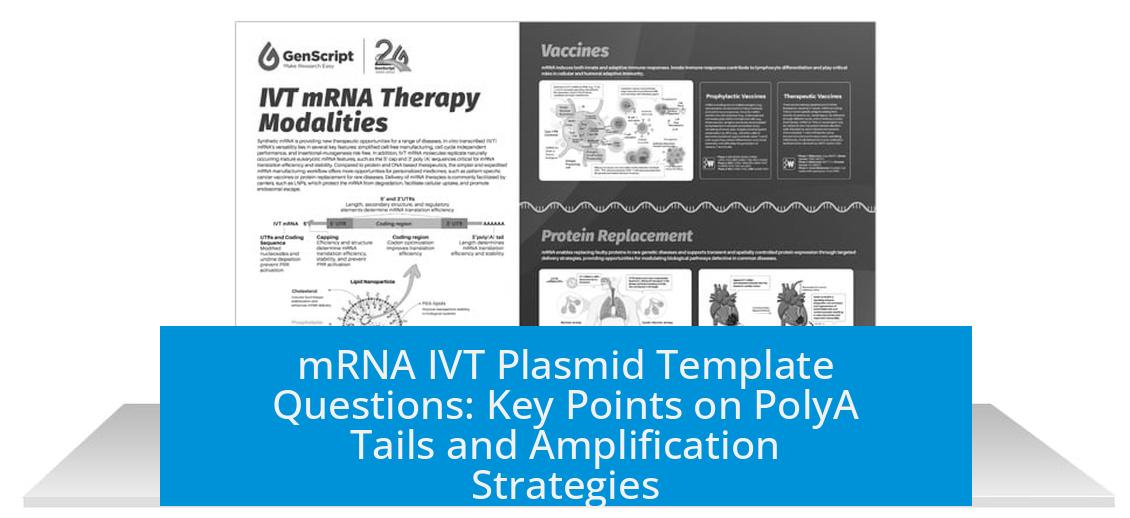mRNA IVT Plasmid Template Questions

The best method to detect polyA tails in mRNA IVT plasmid templates is Sanger sequencing. This method remains the most common and reliable technique for verifying the presence and length of polyA tails in plasmid constructs designed for in vitro transcription.
Detecting and Verifying PolyA Tails

Sanger sequencing provides clear readouts of the polyA region. Despite advances in sequencing technologies, Sanger remains preferred for this specific purpose due to its accuracy in repetitive sequences. Although it might be time-consuming, it allows direct observation of polyadenylation length and integrity.
Amplification and Construct Assembly
Amplifying gene fragments along with polyA sequences from plasmids is feasible. This approach was successful when two gene fragments plus the polyA tail were amplified separately and then combined through PCR. To optimize results, primer design, annealing temperature, and cycle number must be carefully calibrated.
Special considerations include the choice of bacterial strains for plasmid propagation. High polyA repeats, such as 100 base polyA tails, may be unstable and undergo recombination into shorter lengths (e.g., 20 bp) in standard E. coli strains. Using specialized stable strains like Stbl cells helps maintain the polyA region length during bacterial growth.
Amplification Strategy and Fidelity
Minimizing amplification cycles is crucial to limit mutations or deletions during PCR. High-fidelity DNA polymerases reduce errors during amplification. Despite careful procedures, heterogeneity in polyA length can occur, resulting in a plasmid population with variable polyA tail sizes.
When preparing templates with a minimum 100-base polyA, starting with a slightly longer polyA stretch (e.g., 120 bases) is advisable. This compensates for inevitable shortening during replication and amplification processes. Even with precautions, some polyA loss is expected, so verification by sequencing is essential to confirm tail length post-amplification.
Summary of Key Points
- Sanger sequencing is the preferred method to detect and verify polyA tails in IVT plasmid templates.
- Amplifying gene fragments and polyA tails together is possible but requires primer and PCR optimization.
- Use specialized Stbl bacterial strains to maintain polyA tail stability during plasmid propagation.
- Minimize PCR cycles and use high-fidelity polymerases to preserve sequence integrity.
- Expect some variability in polyA tail lengths; starting with longer polyA segments helps compensate.
- Always verify polyA length by sequencing after amplification steps.
What is the best method to detect polyA tails in an mRNA IVT plasmid template?
Sanger sequencing is the best method to detect polyA tails. It is the most common and reliable approach to verify polyA sequences.
Can I amplify gene fragments and polyA from a plasmid for mRNA construct assembly?
Yes, it is possible. Amplifying two gene fragments along with a polyA tail and then the full construct can work. Optimize primers, cycle numbers, and annealing temperatures for best results.
Why should I use specialized E. coli strains like stbl cells when working with polyA tails?
Specialized strains like stbl help prevent recombination events. For example, a 100bp polyA tail may get reduced to 20bp in regular strains, affecting plasmid stability.
How can I minimize errors during amplification of mRNA IVT templates?
Minimize amplification cycles and use high-fidelity polymerases. Even then, validate the final product with Sanger sequencing to ensure sequence accuracy.
Is the polyA tail length consistent after plasmid construction?
No, the final plasmid usually contains a mix of polyA lengths. Starting with a longer tail, like 120bp, helps compensate for some polyA loss, but variability remains.





Leave a Comment